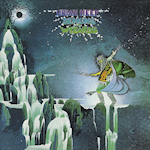
"Demons and Wizards" is the fourth studio album by the British rock band Uriah Heep, released May 19, 1972. The album is considered to be one of the band's seminal works and a landmark release in the progressive rock genre.
The album features a mix of heavy rock, progressive rock, and hard rock, with intricate arrangements and elaborate vocal harmonies. The songs on the album showcase the band's musical virtuosity, with complex time signatures and instrumental passages.
The album includes some of the band's most iconic tracks, including "The Wizard," "Easy Livin'," and "Rainbow Demon." "The Wizard" is a classic rock anthem, featuring a memorable Hammond organ riff and a catchy chorus. "Easy Livin'" is a hard-hitting rocker with a driving beat and a powerful vocal performance by lead singer David Byron. "Rainbow Demon" is a slower, more introspective track with haunting vocals and a brooding atmosphere.
The album was produced by Gerry Bron, who had previously worked with bands such as Deep Purple and Manfred Mann's Earth Band. The album's cover art by Roger Dean, featuring a striking image of a wizard, has become iconic and is often cited as one of the greatest album covers of all time.
"Demons and Wizards" is a highly regarded album in the history of rock music, and is considered to be one of Uriah Heep's best works. It continues to be popular with fans of the band and of progressive rock in general.
Uriah Heep genealogy and discographyExplore Uriah Heep music on Amazon...
Wishbone Ash: “Argus” 1972
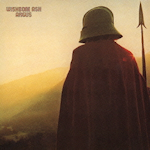
"Argus" is the third studio album by the British rock band Wishbone Ash, released April 28, 1972. It is considered one of their most influential and beloved albums, as well as a classic of the progressive rock genre.
The album features the twin lead guitar work that became a signature sound for the band, with Andy Powell and Ted Turner playing off each other in intricate and harmonious ways. The rhythm section of bassist Martin Turner and drummer Steve Upton provide a solid foundation for the guitar work, while also adding their own melodic touches.
The album is perhaps best known for its opening track, "Time Was," which features a memorable guitar riff and soaring vocals. Other highlights include the hard-rocking "Blowin' Free," the epic "The King Will Come," and the acoustic ballad "Throw Down the Sword."
"Argus" received critical acclaim upon its release and has since been hailed as a classic of the progressive rock genre. It has been cited as an influence by many other musicians, and has been praised for its intricate guitar work, melodic songwriting, and tight arrangements. It is a must-hear album for fans of classic rock and progressive rock.
Wishbone Ash genealogy and discographyExplore Wishbone Ash music on Amazon...
Rolling Stones: “Sticky Fingers” 1971

"Sticky Fingers" is the ninth studio album by the Rolling Stones, released in 1971. It's widely regarded as one of their greatest and most influential works, and it marked a departure from their earlier blues-inspired sound to a more rock-oriented style.
The album features some of the Stones' most well-known tracks, including "Brown Sugar," "Wild Horses," and "Can't You Hear Me Knocking." It also includes collaborations with other musicians, such as Ry Cooder and saxophonist Bobby Keys.
One of the distinctive features of "Sticky Fingers" is its iconic cover, designed by artist Andy Warhol, which features a close-up of a man's jeans with a real zipper that can be unzipped to reveal a pair of briefs.
The album was a critical and commercial success, reaching No. 1 on both the US and UK charts. It's been praised for its bluesy, raw energy and its incorporation of various genres such as country and soul, which helped pave the way for the Stones' future experimentation with different musical styles. Overall, "Sticky Fingers" remains a beloved and influential album in the Stones' extensive discography.
Rolling Stones genealogy and discographyExplore Rolling Stones music on Amazon...
Robin Trower: “Bridge of Sighs” 1974
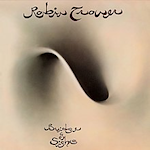
"Bridge of Sighs" is a classic rock album by British guitarist Robin Trower, released April 20, 1974. It was his second album after leaving Procol Harum, and was a commercial breakthrough for Trower. It was certified Gold on September 10, 1974. The album features Robin Trower's signature guitar style, which is heavily influenced by the blues, and it's considered one of his best works.
The album includes some of Trower's most famous songs, including the title track "Bridge of Sighs," "Too Rolling Stoned," and "Day of the Eagle." The album also features the soulful vocals of bassist James Dewar, who was Trower's longtime collaborator.
"Bridge of Sighs" is often cited as one of the best rock albums of the 1970s and has been praised for its innovative guitar work, powerful vocals, and memorable songs. The album's production is also noteworthy, with its warm, organic sound that captures the energy and emotion of Trower's playing.
"Bridge of Sighs" is a must-listen for fans of classic rock and blues-based guitar music.
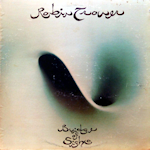
Trivia: There are two versions of the album cover. On some, the cover art by "Funky" Paul Olsen is rotated 180°. Early printings of the original album cover had the front image upside-down and were more greenish in color.
Robin Trower genealogy and discographyExplore Robin Trower music on Amazon...
Aerosmith: “Toys In The Attic” 1975
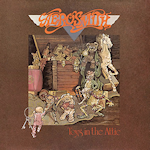
"Toys in the Attic" is the third studio album by American rock band Aerosmith, released on April 8, 1975. It was produced by Jack Douglas and recorded at the Record Plant in New York City.
The album features some of Aerosmith's most iconic songs, including "Walk This Way," "Sweet Emotion," and the title track "Toys in the Attic." The album's sound is a mix of hard rock, blues rock, and heavy metal, showcasing the band's musical versatility and prowess.
"Toys in the Attic" was a commercial and critical success, reaching No. 11 on the Billboard 200 chart and eventually going 8x Platinum in the United States. It is considered one of the greatest rock albums of all time and has influenced countless musicians in the decades since its release.
In addition to its hit singles, other standout tracks on the album include "Uncle Salty," "Adam's Apple," and "No More No More." The album's artwork, featuring a creepy, doll-like figure, has also become iconic and synonymous with the band.
Trivia: The idea for the song "Walk This Way" was inspired by a line in the movie "Young Frankenstein".
Aerosmith genealogy and discographyExplore Aerosmith music on Amazon...
ZZ Top: “Rio Grande Mud” 1972

"Rio Grande Mud" is the second studio album by the American rock band ZZ Top. It was released April 4, 1972 by London Records.
The album features a mix of blues and hard rock, with the band's signature distorted guitar riffs and humorous lyrics. It includes notable tracks such as "Just Got Paid," "Francine," and "Bar-B-Q."
The album received generally positive reviews from critics and helped establish ZZ Top as a major rock band. It also reached number 104 on the Billboard 200 chart.
"Rio Grande Mud" is considered an important album in ZZ Top's early career and is still appreciated by fans of blues rock and hard rock music.
Trivia: The only single released from the album was "Francine", which peaked at number 69 on the Billboard Hot 100. The A-side was the album version, while the B-side featured the song with the vocals re-recorded in Spanish.
ZZ Top genealogy and discographyExplore ZZ Top music on Amazon...
Peter Frampton: “Frampton Comes Alive!” 1976

"Frampton Comes Alive!" is a live album by British musician Peter Frampton, released January 6, 1976. It is one of the best-selling live albums of all time and helped establish Frampton as a major star.
The album was recorded during Frampton's concerts in California and New York in 1975, and features some of his most popular songs such as "Show Me the Way," "Baby, I Love Your Way," and "Do You Feel Like We Do." The live performances on the album were recorded at various venues across the United States, and they showcase Frampton's exceptional guitar skills, as well as his dynamic stage presence and rapport with the audience.
"Frampton Comes Alive!" was a massive commercial success, reaching number one on the charts in both the United States and Canada, and selling over 16 million copies worldwide. It also earned Frampton three Grammy Award nominations, including Album of the Year.
One of the defining features of "Frampton Comes Alive!" is Frampton's use of the talk box, a guitar effect that modifies the sound of the guitar and creates a vocal-like sound by sending the guitar signal through a tube and into the player's mouth. The talk box can be heard on several tracks, including "Do You Feel Like We Do," which features a famous 14-minute talk box solo.
"Frampton Comes Alive!" is a seminal album that captured the energy and excitement of Frampton's performances and is widely regarded as one of the greatest live albums in rock history. It remains a beloved classic of the rock and roll genre, and a must-listen for fans of live music.
Trivia: The vinyl LP album 2-record set was pressed in "automatic sequence", with sides one and four on one record, with sides two and three on the other. The intent was to make it easier to listen through the whole album in sequence on automatic record changers.
Peter Frampton genealogy and discographyExplore Peter Frampton music on Amazon...
